Showing 13–24 of 158 results
“An assemblage of twenty-six scholarly essays: in honour of Dr Kapila Vatsyayan, the book attempts to conjure up the integral vision of art — exploring, as it does, the underlying unity of different disciplines. Written by distinguished Indian and foreign scholars: artists, art historians, archaeologists, anthropologists, scientists, philosophers and litterateurs, who have shared or subscribed to Dr Vatsyayan’s holistic vision of arts, these essays look for the linkages that have existed within the arts, between the arts, and across the cultures — focusing, contextually, on the form, the content, and the vision of art in terms of time and space. With at once stimulating alternative viewpoints available to humankind today, the authors consider space, time and consciousness as they are related to, and expressed in, metaphor, symbol and creative process. Together with cross-cultural comparisons of art, the book also explores the future of man as an artist. Art: The Integral Vision, besides the Editors’ Introduction giving an overview on the presentations, is blessed by His Holiness the Dalai Lama’s personal message. A foremost authority on Indian art and culture, Dr Kapila Vatsyayan is well-known to all serious scholars of art history, religion, philosophy and cosmology. A prolific author and recipient of several honours, including the prestigious Padma Shree (1990) and Padma Vibhushan (2011), she has convincingly spelt out the unifying principles of cultural plurality and the interdependence and interrelatedness of creative arts. This holistic vision — unmistakably manifest in her writings — has come to finest fruition in her setting up (in 1985) the Indira Gandhi National Centre for the Arts (IGNCA), New Delhi. This is a fascinating book for wide-ranging specialists and students interested in the mathematical, geometrical, metaphysical, astrophysical, cosmological, philosophical, psychological, historical, mythological and metaphorical understanding of art, especially the Indian art.”
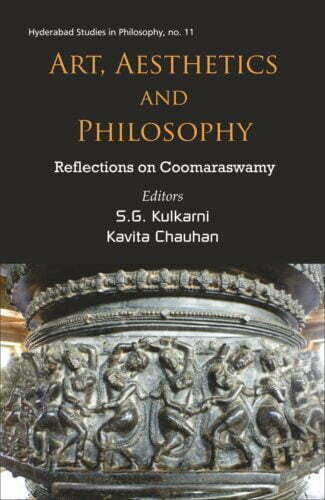
This book presents the varied reflections on Coomaraswamys personality as a philosopher, art historian, art curator and his strong positioning against the colonial teachings of Western art historians and philosophers on Indias art, civilization and culture, projecting an image of Indianness in every sphere.
The savants of the twentieth century have excavated the past to discerningly reveal the present. Swami Vivekananda, Rabindranath Tagore, Sri Aurobindo, Mahatma Gandhi and Ananda Coomaraswamy, among others, interpreted Indian aesthetics, civilization, culture and philosophy unearthing the Indian wisdom against the wrong interpretations and teachings of the Western colonial scholars. This volume, a collection of papers presented at a national seminar on the Philosophy of Ananda Coomaraswamy held in February 2011 at the University of Hyderabad, approaches Coomaraswamys philosophy on Indian aesthetics, life and religion from different perspectives.
The volume brings forth different facets of Coomaraswamy: as a catalyst in spiritualizing Indian arts; his views on modernism and anti-modernism; his efforts in aestheticizing India; his polemics of decolonization through art criticism; his aesthetical philosophy; his perception and understanding on art, culture and Indianness; his metaphysics; and his philosophical approach to visuals and materials from the lens of an art historian. It sketches Coomaraswamys multifaceted persona, enunciating that the crux of modern Indian philosophy is one of vision, rather than building theories.
In a nutshell this book presents the varied reflections on Coomaraswamys personality as a philosopher, art historian, art curator and his strong positioning against the colonial teachings of Western art historians and philosophers on Indias art, civilization and culture, projecting an image of Indianness in every sphere.

This book gives exhaustive and valuable insights into all aspects of the artisans and craftsmen of northern India who played a key role in the evolution of life between the seventh and twelfth centuries ce. This critical study examines the socio-economic conditions of the various categories of workers in stone, metal, clay, leather, cotton, salt, and other industries.
The basic aim of the book is to expose the major contributions of artisans and craftsmen in portraying the society in different perspectives. These artisans and craftsmen, were drawn mostly from the shudras, lower caste of the community, suppressed and have-nots section of the society, but were highly talented. The work is also designed to create interest among the reader and scholars alike, to understand the society of the period under reference through the immortal art of these creative people. The artisans such as potters, weavers, carpenters, architects, sculptors, brick-makers, metallurgy and metal workers, leather workers, painters, and the workers engaged in the profession of ivory, glass and mirror, perfume and cosmetic, musical instrument, oil, salt and liquor makers, etc. were the heroes of that time, who not only met the day-to-day requirement of the then society, but also portrayed different aspects of their life, in its true color, through their workmanship. It was the architect who designed and constructed houses to live in, as well as water tank, well and channel, royal building, stupa, temple and fort, bridge, pillar and rock-edict etc., which met the need of the society.
Today, we feel proud of the rich heritage of old Indian art and architecture, credit for which solely goes to the then artisan who crafted immortal creations. However, the invaluable contribution made by the historians in immortalizing their creations, by putting them in black and white, is no less important. It is the historian, whose mighty pen has immortalized not only Ashoka the great, as a king but also the creators of the stupas of his times on equal footings. It is with this aim in view that the present book has been presented to the posterity, in order to pay rich tributes to the creators of our rich cultural heritage.
Unluckly there was no proper institutionalized provision for the education of artisans and craftsmen, so generally the former adopted the occupation of their parents and hereditary skill was enhances as it was transferred from father to son, and generation to generation. Contemporary sources reveal that the social stautus of artisan class was based on the nature and economic conditions of a particular profession.
The centuries-old exchange of ideas, knowledge systems, resources, skills and materials among the people of the Asian continent left a lasting legacy in various spheres of human experience. This was a dialogue that involved rich exchange of religious, literary, aesthetic and artistic ideas and forms across the regions of Asia. The general impressions of an art, which is spiritual and magical in character, highly charged with literary myths and legends, and presented through a seemingly improvised styles in various art forms, provide us with a clue of an understanding of the fundamental foundations of the arts in Asia.
This volume contains the papers of the panel on ‘Asian Aesthetic Theories and Art Forms’ in first two sections. This panel was a part of the international conference on “Asian Encounters: Networks of Cultural Interaction” held in New Delhi. The volume reaffirms that the Indian theory of art as a creative process and creative expression is broadly true for entire Asian theory of art and aesthetics and it opens up a pan-Asian theory of art and aesthetics.
‘Representation of Asian Art in Asian Museums’ was another panel of the conference. The volume contains three papers from that panel also and the transcript of the dialogue held on ‘Cross Cultural Frontiers in the Study of the Past’.
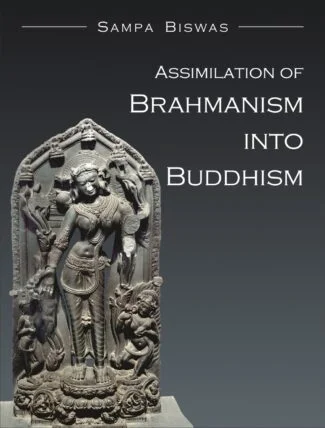
It has its focus on Buddhism and Buddhist art of early medieval period in India. The introduction of Tantrism bought Buddhism and Brahmanism closer to each other, both in enmity and similarity. It opened the gate to the vast field of Buddhist iconography, Tantric practices, deities, mudras and mandalas.
Assimilation of Brahmanism into Buddhism is a research work on Buddhism and Buddhist art of early medieval period in India. Archaeological materials and literary records suggest that Buddhism had a continuous existence during the third century bce to the thirteenth century ce in India. Though early Buddhism was totally different in its doctrines and faith from the Brahmanical system, the Buddhism of today is a religio-philosophical system having assimilated and adopted new ideas and beliefs from the environment in which it was born and nurtured.
The introduction of Tantrism bought Buddhism and Brahmanism closer to each other. It opened the gate to the vast field of Buddhist iconography along with Tantric practices, deities, mudras and mandalas. Many of these were influenced by the Brahmanic idea of godhead and some were the combination of one or more ideas of Brahmanic divinities. There was assimilation of a number of factors between Brahmanism and Buddhism.
This scholarly volume addresses the different aspects of this assimilation process by getting into a historical study of Hinayana and Mahayana Buddhism; outlining the political history, and socio-economic and religious changes during 300700 ce; scanning the political and economic background and the spreading of esoteric Buddhism; emergence of Vajrayana Buddhism; and providing a detailed sketch of Vajrayana images.
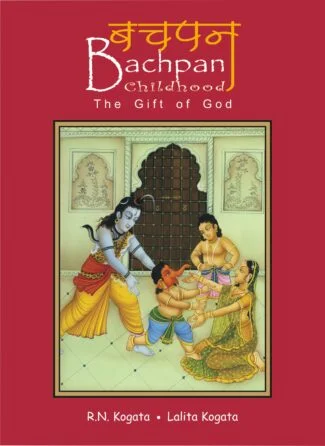
This book is a small attempt to express the love, affection and feelings towards children. Through pleasing illustrations, the authors have touched upon the various facets in the life of a child. Delightful verses add sweetness and charm to the book.
In the life of a human being the most sweet and memorable part is its childhood, say from its second year till its seventh or eighth. During this time the child is very innocent, full of life, playful, has no responsibility or worry, and when in fear or pain it calls its mother and she is there ever ready to protect it. It understands no restriction and has freedom to go and talk to anybody in the house. It does not know how to hate anyone — in fact, it is like the manifestation of the ever-gracious divinity in the world. A child is loved, respected and even adored.
This book is a small attempt to express the love, affection and feelings towards children. In Hindu pantheon the only divine family having children is that of Shiva and Parvati or Uma. Through pleasing illustrations, another made-for-each-other couple — the Kogatas — have touched upon the various facets in the life of the divine chidren — Ganesha and Karttikeya — together with their doting parents. The delightful verses add sweetness and charm to the book.
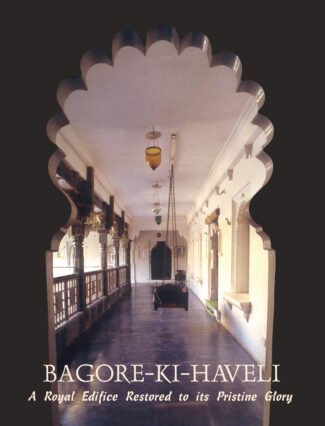
The work takes us on a journey through the famous Bagore-ki-Haveli, which typifies the best of Mewari architecture, to show us the splendour and magnificence of a Rajasthani royal household. With many colour photographs, it reconstructs the royal lifestyle and practices its customs, religious undertakings and costumes, and discusses the artistic beauty of the haveli.
Rajasthan boasts of many beautiful monuments and structures of the royalty which stand as evidence to Indias glorious ancient culture and heritage. The Bagore-ki-Haveli is one such edifice. The book takes us through the architectural wonders of the haveli to reflect what it had been the royal household of Maharaj of Bagore. With many splendid colour photographs of its impressive rooms, large balconies, wide terraces and attractive, leafy courtyards, it reconstructs the royal household and its functioning, customs and religious practices, costumes and ornaments, and arts and entertainment. It captures the artistic brilliance of the exquisite glass inlay work and paintings in the restored haveli including a gallery of Madhurastakam paintings describing the loveliness of Sri Krishna and his divine lover, Radha. The work highlights the charming style of the haveli that typifies the best of Mewari architecture but has a unique character of its own. The book, a visual delight presenting a glimpse into the royal lifestyle and splendour of the time, will be invaluable to historians studying the history, art and architecture of north India in the centuries before Indias independence and will also interest readers in general as well as tourists.

This beginner-friendly book offers a clear and concise introduction to Indian philosophy, covering key concepts, major schools of thought, and progressive ideas like Vedic feminism and environmental awareness. Ideal for curious minds, it encourages deeper exploration.
“This introductory book on Indian philosophy is thoughtfully crafted for beginners and inquisitive readers interested in exploring the core concepts and varied traditions of this rich intellectual heritage. It is not aimed at advanced scholars or regular students, but at sincere seekers ready to embark on their initial journey into the subject. Presented with clarity and ease, it offers a solid foundation and encourages further engagement with original texts and academic perspectives.
Covering ten essential topics, the book touches upon the common characteristics of Indian philosophy, environmental awareness as reflected in the Vedas, and Vedic feminism – highlighting the progressive and inclusive elements of early Indian thought. It also introduces readers to key texts like the Upaniṣads and explores major philosophical schools, including Cārvāka (materialism), Bauddha (Buddhist), and Jaina philosophies, as well as the Nyāya–Vaiśeṣika, Sāṁkhya–Yoga, and Mīmāṁsā–Vedānta systems.
Each chapter offers a brief yet insightful overview, making complex philosophical ideas approachable for new learners. The inclusion of an epilogue adds further value by guiding readers toward additional resources for advanced study, expanding their understanding beyond the scope of the book.
This book is ideal for anyone interested in the spiritual, ethical, and metaphysical inquiries that have shaped Indian tradition. With its concise explanations and thoughtful structure, it is a valuable companion on the journey into Indian philosophical thought.”
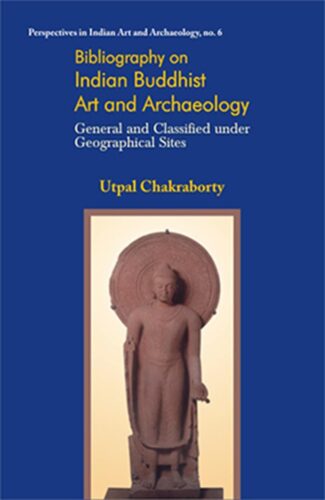
The bibliography includes 4081 entries, covering published materials in English and French languages over the last two centuries. The book gives a representative overview of what has been researched and accomplished in the field of Indian Buddhist Art and Archaeology since Wilkinss article on Bodh-Gaya in 1788 or Thomas Daniel’s first illustration on the Kanheri caves in 1798.
The bibliography includes 4081 entries, covering published materials in English and French languages over the last two centuries. It is divided into two parts. The first part contains 2410 entries dealing with Indian Buddhist art and archaeology and Indian art in general, history, religion, some Buddhist sites outside present India with special attention given to Pakistan , etc. Entries in the second part are exclusively devoted to Indian Buddhist sites. There are 57 sites; each one is individually studied. The book gives a representative overview of what has been researched and accomplished in the field of Indian Buddhist Art and Archaeology since Wilkins’s article on Bodh-Gaya in 1788 or Thomas Daniel’s first illustration on the Kanheri caves in 1798.
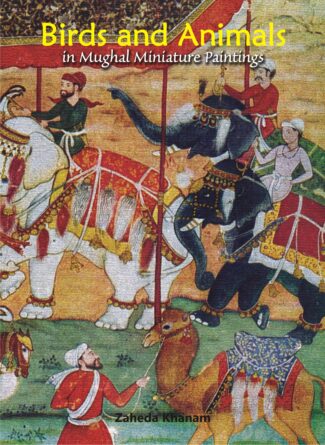
This book is a survey of the birds and animals used in Mughal paintings, especially during the reigns of Emperors Akbar and Jahangir. It deals with the different perspectives of the two rulers in preserving for posterity the birds and animals found in their times.
The depiction of flora and fauna has been an intrinsic part of Indian painting traditions. The Mughals in their turn, in their fascinating paintings, used the bird and animal imagery to lend a special quality to their art of painting. This book, with over 70 illustrations, is a survey of the birds and animals used in Mughal paintings, especially during the reigns of Emperors Akbar and Jahangir. With historical details, it shows that the depiction of various kinds of birds and animals played a significant role in conformity with the context or the demands of the narratives. The artists painted both wild and domestic animals with equal competence. Outlining the differences in the paintings under the Mughal rulers themselves with regard to depiction of fauna, it notes that while Akbar was interested in historical, mythological or anecdotal events, Jahangir introduced album paintings and evinced interest in individual portrait studies of fauna. In all, it showcases the meticulous depiction of fauna in Mughal art and its persevering beauty. It mentions the names of a host of artists who executed the paintings and the many illustrated manuscripts mythological, historical and on popular fables that saw lavish use of paintings with faunal imagery. The book will interest historians especially those studying art history of the medieval period.
Borobudur was constructed during the eighth century as a guide to the Noble Path of the Buddha. Born from silence and unfolding into the serenity of the other shore, it expresses the glory of Indonesia’s awareness and creativity, the smile of her plastic forms over the centuries as well as her travels along the edge of thoughts that cross the endless corridors of memory. Though the Western world rediscovered this magnificent structure almost 200 years ago, this sacred place nonetheless remains seated in its enigmatic depth, engulfed in vaporous illusions, waiting for someone to find the base simplicity of its Truth. This book is a catalyst and invites adventurous minds to find new directions by bringing into focus the vast universe of the Borobudur in order to cultivate the Way to weeding out error. The questions posed or solutions offered herein are like water and waves: different yet identical in essence. They stir discussion. One of the special contributions of this book lies in its correlating the cyclical movements of the Sun and Moon with the numerical symbolism of Borobudur. The authors cite the magical effect of the Sun suddenly appearing out of the volcano Merapi and empowering the Borobudur-mountain with its radiant energy in poetic imagery. This magic moment of satori or enlightenment echoes the experiences of the unknown Shailendra monarch who had commissioned the monument’s construction and the inspiration that made the architect envision this Buddhist wonder.
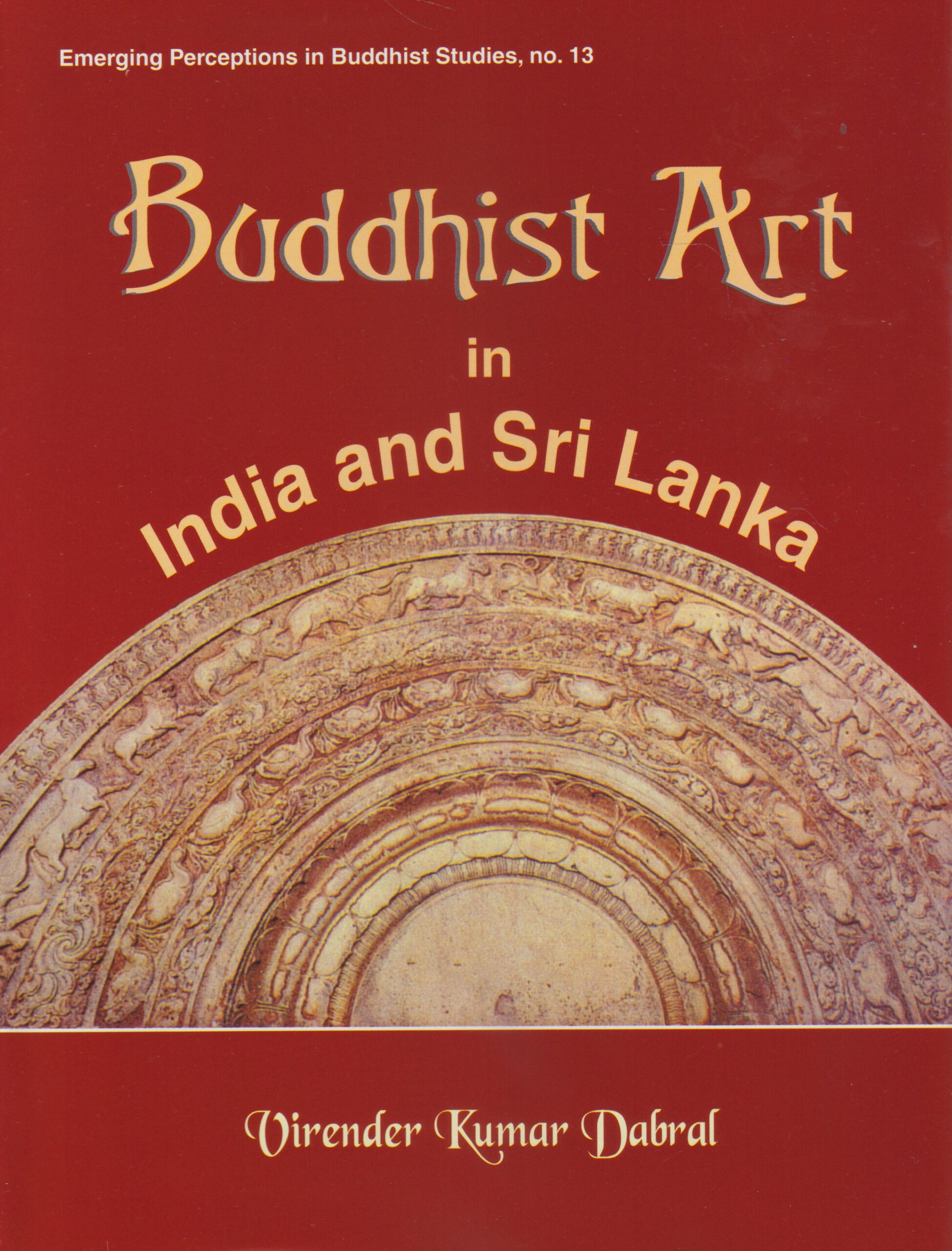
The book is a comprehensive study of the evolution and development of Buddhist visual art in India and Sri Lanka, taking into consideration their diverse forms and the impact of regional trends on them. It examines architecture, sculpture, painting, and use of symbols like the lotus and Sri Lanka devil masks.
The book is a comprehensive study of the evolution and development of Buddhist visual art in India and Sri Lanka, taking into consideration their diverse forms and the impact of regional trends on them. Consulting a number of original sources including scholarly works in the Sinhala language, Dr. Dabral highlights the salient features of ancient Buddhist art in the two countries with special attention to architecture, sculpture, painting, use of symbols like the lotus and Sri Lanka devil masks. Dr. Dabral emphasises how Sri Lankan Buddhist art though originally derived from Indian art, developed its own art forms on the basis of local conditions. The critical study evaluates Buddhist art under various rulers/empires such as the Mauryan empire, the Kushanas, the Nagas and the Guptas. With numerous plates and an extensive bibliography, it gives insights into important aspects like the architectural excellence of stupas and viharas, the Sigiriya frescoes, Ajanta and Bagh paintings, Mathura, Gandhara and Sarnath schools of art, and the Jatakas as reflected in carvings at Sanci, Amaravati and other places.
| There are no products |